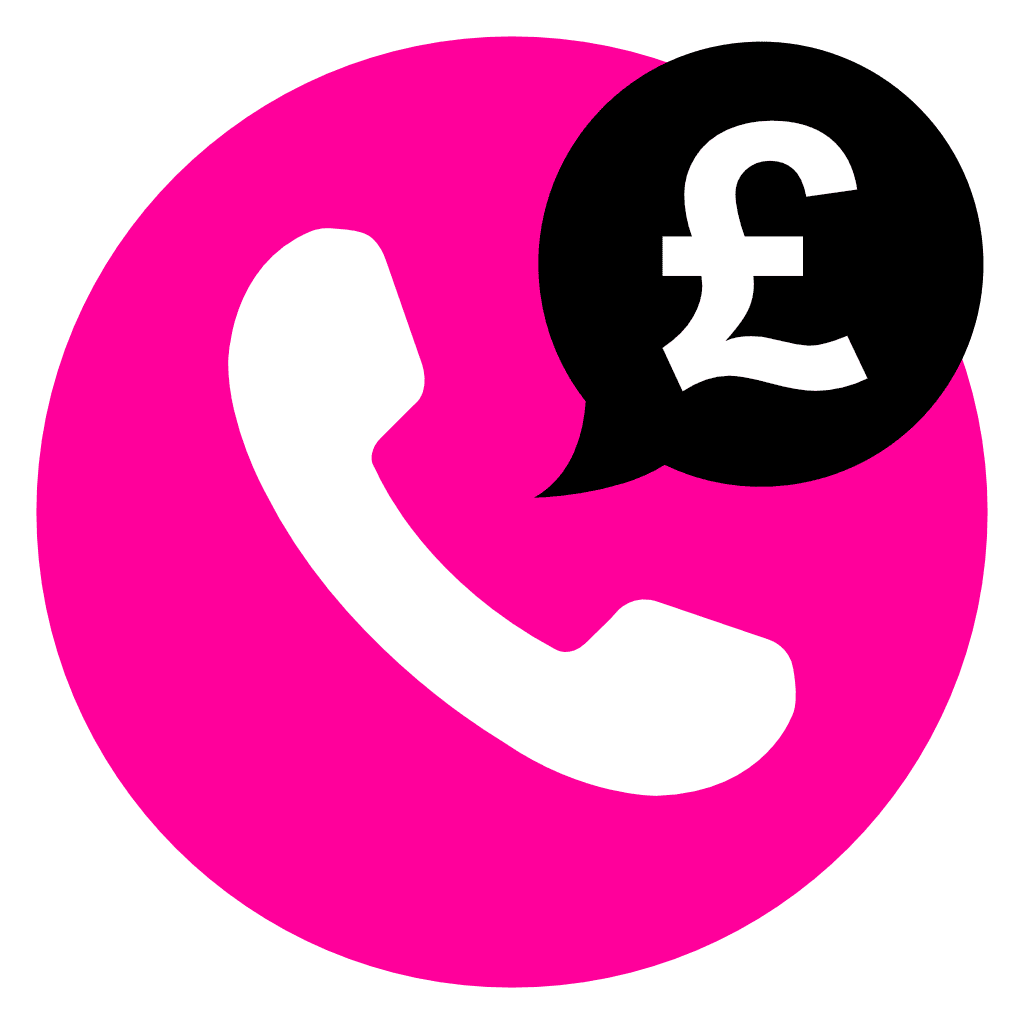Two major contenders in the business communications market are Vonage and Zoom, each offering a suite of communication and collaboration tools. However, their offerings cater to slightly different business needs. This analysis provides an in-depth comparison of Vonage vs Zoom for features and costs, helping you decide which solution best aligns with your business objectives.
Overview of Vonage vs Zoom
Vonage: Known primarily for its VoIP services, Vonage has expanded its offerings to include cloud communication solutions, particularly for businesses. Vonage Business Communications (VBC) provides an array of features centred on telephony and unified communications, including messaging, video conferencing, and integrations with popular business tools.
Zoom: Zoom has become synonymous with video conferencing, but its suite of products extends beyond that. It offers robust collaboration features, including voice calls, chat, and webinars, making it a comprehensive communication platform for businesses of all sizes. Zoom’s popularity surged during the pandemic, but it has since positioned itself as a tool not only for remote work but also for hybrid work environments.
| Feature | Vonage | Zoom |
|---|---|---|
| Primary focus | VoIP and unified communications | Video conferencing and collaboration |
| Voice services | Advanced VoIP with PBX features, call forwarding, toll-free numbers, voicemail-to-email, call monitoring | Zoom Phone offers basic voice services, call forwarding, voicemail, but fewer PBX features compared to Vonage |
| Video conferencing | Included but not the main focus; supports smaller group meetings | Market leader in video conferencing with high-quality video, breakout rooms, polls, and more for webinars and meetings |
| Messaging and chat | SMS, MMS, team messaging within the unified communications suite | Integrated team chat features for quick communication during and outside meetings |
| Integrations | Extensive CRM integrations (Salesforce, HubSpot, Microsoft Dynamics), API flexibility for custom workflows | Integrates with Google Workspace, Microsoft Teams, Slack, and CRMs (Salesforce, HubSpot), plus SDK for custom video integrations |
| Customer support | 24/7 support for business plans, phone, email, and chat support | 24/7 support varies by plan; phone support available with higher-tier plans |
| Reliability | 99.999% uptime guarantee, ideal for critical business communications | High reliability, particularly in video conferencing, with minimal disruptions |
| Customisation | Offers extensive API options for custom communication workflows | SDK available for embedding video into other applications |
| Scalability | Flexible plans suitable for small to enterprise-level businesses | Scalable video conferencing for businesses of all sizes, especially good for remote and hybrid work settings |
| Mobile app support | Yes, fully functional mobile apps for calling and messaging | Yes, fully functional mobile app for video conferencing and chat |
| Security | TLS and SRTP encryption, along with fraud detection and call monitoring | End-to-end encryption for video meetings (optional), role-based access control |
| Pricing (per user) | – Mobile Plan: from £10/month – Premium Plan: from £15/month – Advanced Plan: from £20/month | – Free: £0/month (40-min group meetings) – Pro Plan: £11.99/month – Business Plan: £15.99/month – Zoom Phone: from £8/month |
| Best for | Businesses needing advanced telephony, PBX features, and customisation | Businesses focused on video meetings, webinars, and hybrid work collaboration |
| Uptime and call quality | Strong call quality and uptime, optimised for voice services | Excellent video quality, strong uptime for video meetings |
| Webinars and large meetings | Limited to basic video meetings; not ideal for webinars | Best-in-class for large meetings, virtual events, and webinars with advanced features like breakout rooms |
| Free plan availability | No free tier for businesses; trial options may be available | Yes, free tier with basic video and meeting features for up to 40 minutes per group meeting |
Feature comparison
1. Voice and telephony services
- Vonage: As a VoIP pioneer, Vonage shines in its voice services. The VBC platform offers high-quality voice calls with PBX features such as call forwarding, call waiting, voicemail-to-email, and automatic call distribution (ACD). It also supports toll-free numbers, virtual receptionist capabilities, and call monitoring, which are essential for businesses that handle a significant number of customer calls.
- Zoom: While Zoom is primarily known for video conferencing, it also offers a Zoom Phone product that integrates voice communication into its platform. Zoom Phone comes with essential telephony features such as call forwarding, call recording, and voicemail, but it may not be as feature-rich as Vonage in terms of PBX-level options. For businesses needing more advanced telephony solutions, Vonage may hold an edge.
2. Video conferencing and collaboration
- Vonage: Vonage includes video conferencing as part of its offering, though it’s not its flagship feature. Its video capabilities support group meetings, but for larger webinars or interactive meetings, Vonage may feel less robust compared to Zoom. However, the integration with the Vonage Contact Center allows businesses to leverage customer support features in video settings.
- Zoom: Zoom is a market leader in video conferencing, offering unparalleled features for webinars, virtual events, and large group meetings. Zoom Meetings are known for their ease of use, high video quality, and interactive features such as breakout rooms, polls, and real-time collaboration tools. Additionally, Zoom integrates seamlessly with other platforms such as Google Workspace, Microsoft Teams, and Slack, making it an ideal choice for businesses focusing on video communication.
3. Messaging and chat
- Vonage: Vonage provides robust business messaging capabilities, including SMS, MMS, and team messaging within its unified communications suite. Its messaging features are well-integrated across devices, allowing for seamless transitions between desktop and mobile communications.
- Zoom: Zoom offers team chat features that are integrated into its meetings and phone systems. While the chat functionality is basic compared to dedicated messaging platforms like Slack, it’s useful for quick communication within teams, especially in remote or hybrid work settings.
4. Integrations and APIs
- Vonage: Vonage has a rich ecosystem of integrations with major CRM platforms such as Salesforce, HubSpot, and Microsoft Dynamics. Its API offerings are particularly notable, allowing businesses to build custom applications and workflows that leverage Vonage’s communication capabilities. This is especially useful for companies looking for flexibility and customisation in how they use communication tools.
- Zoom: Zoom also offers a strong set of integrations with major business applications. From project management tools like Asana and Trello to CRMs like Salesforce and HubSpot, Zoom fits well into most business workflows. Zoom’s SDK (Software Development Kit) allows for the integration of its video capabilities into other business applications, which is beneficial for industries like telemedicine and education.
5. Customer support and reliability
- Vonage: Vonage offers 24/7 customer support with its business plans, providing a range of support channels including phone, email, and chat. Its uptime guarantee is 99.999%, which is critical for businesses that need reliable voice and communication services.
- Zoom: Zoom also offers 24/7 support, though the level of support varies depending on your plan. Zoom’s platform is known for its reliability, particularly for video conferencing, where its performance is consistently high with minimal disruptions.
Vonage vs Zoom cost comparison
1. Vonage pricing
Vonage Business Communications offers several tiers, with pricing depending on the number of users and features required. For small to medium-sized businesses, Vonage’s pricing structure is as follows:
- Mobile Plan: From £10 per user per month, this plan includes mobile and desktop apps for making and receiving calls, plus basic messaging features.
- Premium Plan: Starting at £15 per user per month, this plan adds video conferencing, CRM integrations, and more advanced call management features.
- Advanced Plan: From £20 per user per month, the advanced plan includes everything in Premium, plus more in-depth analytics, API integrations, and enhanced support.
Vonage’s pricing is highly scalable, making it a flexible option for businesses looking for more customisable communication plans as they grow.
2. Zoom pricing
Zoom’s pricing depends largely on the products you need, with separate plans for meetings, phone systems, and webinars:
- Zoom Free: Free for personal use or very small teams, offering 40-minute group meetings, unlimited one-on-one meetings, and basic team chat.
- Pro Plan: £11.99 per host per month, suitable for small businesses, offering extended meeting durations and 1GB of cloud recording per licence.
- Business Plan: £15.99 per host per month, including all Pro features plus up to 300 participants, dedicated phone support, and integrations.
- Zoom Phone Plan: Starts at £8.00 per user per month, offering basic voice capabilities, but for more advanced business use, you may need to combine it with Zoom’s other products.
For businesses heavily focused on video conferencing, Zoom’s pricing is competitive, though bundling multiple services may drive the cost up.
Which is right for your business?
Vonage is the better choice for businesses needing a comprehensive telephony solution with flexible pricing, advanced call management features, and a focus on voice communication. It’s ideal for organisations that handle high call volumes or need integration with CRMs and other sales platforms.
Zoom, on the other hand, excels in video conferencing and is the go-to platform for businesses prioritising video collaboration and webinars. If your organisation operates remotely or in a hybrid setting and frequently relies on video meetings or events, Zoom’s comprehensive video features and user-friendly interface will make it a better fit.
Conclusion – Vonage vs Zoom
The choice between Vonage vs Zoom depends largely on your business’s specific communication needs. Vonage is stronger in voice communication, PBX features, and CRM integration, while Zoom dominates the video conferencing space. If your business requires robust telephony services, Vonage is likely the better option. If video meetings and webinars are more critical to your operations, Zoom’s feature set will serve you better.
FAQ
Vonage is primarily a VoIP provider with robust telephony features, while Zoom focuses on video conferencing and collaboration. Businesses needing advanced call handling should lean towards Vonage, whereas Zoom is better for video-heavy remote or hybrid work environments.
Vonage excels in voice services with advanced PBX features, call routing, and voicemail management. Zoom’s voice offering, Zoom Phone, is adequate for basic needs but lacks the depth of call management features that Vonage provides.
Zoom is a leader in video conferencing with high-quality meetings, webinars, and collaboration tools like breakout rooms. Vonage includes video conferencing, but it’s less feature-rich and not as intuitive for large-scale events or virtual meetings.
Both Vonage and Zoom offer strong integrations with CRMs like Salesforce, HubSpot, and collaboration tools like Slack. However, Vonage’s API allows more customisation for communication workflows, while Zoom’s SDK is ideal for integrating video into existing platforms.
Zoom has a free plan with limited features and affordable tiers, starting at £11.99 per month. Vonage’s entry-level plan starts at £10 per user, but the costs increase with advanced telephony needs. Zoom is often cheaper for video, while Vonage can be costlier for voice services.
Zoom’s video conferencing and collaboration tools make it a great choice for hybrid work environments, allowing easy team communication across locations. Vonage supports hybrid work through its unified communications tools but excels in telephony rather than video collaboration.
Both Vonage and Zoom offer 24/7 customer support, but Vonage’s service tends to focus on telephony and more complex integrations. Zoom offers phone support for higher-tier plans but is generally more streamlined for users needing help with video conferencing issues.
Vonage offers a 99.999% uptime guarantee, particularly strong for voice services. Zoom also has high reliability, especially for video conferencing, but it does not have the same emphasis on voice call uptime as Vonage.
Zoom is designed for large webinars and virtual events, offering interactive tools like polls, Q&A, and breakout rooms. Vonage provides basic video meeting capabilities but lacks the advanced features Zoom offers for large-scale online events.
Zoom is highly scalable for businesses of all sizes, especially for remote work setups. Vonage also scales well, particularly for businesses with growing telephony needs, but its core strength lies in advanced call handling rather than video conferencing.

